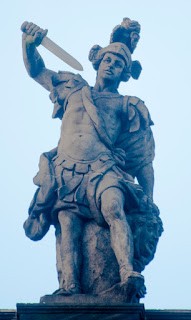Finding cautious optimism, synergistic momentum and the interconnectedness of many things moving toward my departure to the United Nations Cop21 conference on climate in Paris, now just a few days away...
It will be interesting to see how civil society and governments blend there and find their voices at the event. And even more interesting to see if the bottom to top approach from the global citizenry will take hold in the wake of the talks... And if the necessary synergy and a binding agreement can be reached - and in what capacity.
In the last couple decades I have witnessed changing environmental conditions as a dedicated climber, trekker, wilderness guide and adventure travel photographer and writer. Glacial ice in New Zealand, Alaska, Argentina, Chile, Peru and the US is clearly shrinking - and temperatures have been steadily climbing in Australia, the Southwestern US, Pacific Northwest - I have noticed monsoon patterns change in Arizona and Colorado, storms become more violent - and now the driest month in more than a quarter century has provided my intro to Copenhagen life. Acidification and heating of oceans, rains coming at different times and plants not being able to adapt, animal and plant populations with narrow windows of temperature adaptability being threatened and looking at extinction, loss of snowpack in the Sierra and the Rockies and exacerbated water issues in the West...
Now in Scandinavia I am constantly aware via local news of the reality of amplified immigration/refugee challenges and nascently swelling populations of effectively borderless Europe. Enhanced turmoil and pressure toward more insulation and less movement toward embracing the larger human community. I think the danger of nationalism is that it can push us further into the us against them mentality and closer to dehumanization... The recent terror attacks and the culture of fear being thrust forward in mass media seems to be enhancing an islamaphobic mentality in cultures already quite ignorant of Islam in general. Seems to be less desire to understand issues and cultures, more knee-jerk reactions and less diplomacy.
With climate change challenges multiplying the number of refugees perhaps even exponentially, jumping arbitrary borders will inevitably become much more commonplace. It intrigues me that as of yet there is still no acceptable legal status for climate refugees - technically they do not exist in the language applied by countries and it apparently was struck last month from the some 50 page draft within the hopefully to be realized COP21 accord.
As I attempt to research climate challenges and the anthropogenic effects - droughts, floods and fresh water and food growing challenges, I find it closely intertwined with the dominant oil and gas infrastructure and it appears that the current wars, migration, terrorists attacks seem to all have solid roots anchored in the global reality of climate change.. Cautious optimism via scientific recommendation to divest as quickly as possible from oil and gas and embrace and build infrastructure renewables/green energy -
we know what to do and we have to tools to do it - but the effort required and the necessity to work as a global community in a splintering world seems tricky...
There is a lot riding on this COP in particular... I really hope for some serious communication from indigenous, the global citizenry at large - and that this can drive the continued successes to be realized from a binding and international agreement and the shared voice of a planet and countries in distress...
Here are a few images of some of the more beautiful (and now threatened) places I have ever traveled. All images ©Bennett Barthelemy/
Tandem Stills and Motion
 |
| Melting glacial ice in Lago Grey, Torres Del Paine National Park Chile. |
 |
| A calving glacier in the Fitzroy Range, Argentina. |
 |
| Guding a client on a Colorado Rockies Fourteener |
 |
| Pacific Northwest kayaker Brenden Wells on the Little White Salmon River |
 |
| Flowering plants in spring in a very remote part of Grand Canyon National Park. |
 |
| Guiding a remote trail off of the South Rim in Grand Canyon National Park |
 |
| Colorado River, Grand Canyon National Park |
 |
| A woman in Peru's Cordillera |
 |
| Calving Perito Moreno Glacier in southern Argentina |
 |
| Trekking over a 15,000 pass in Peru |
 |
| Sea life on a small deserted island south of Loreto, Baja Sur Mexico |
 |
| Forced begging in Dakar Senegal is a reality for 50,000 youth every day where over half the population is said to live in extreme poverty. |
 |
| Education and schooling is a luxury that many families in Dakar believe they cannot afford so many children work |














































